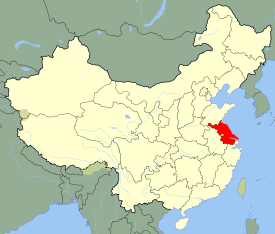Wuxi
| Wuxi 无锡 |
|
|---|---|
| — Prefecture-level city — | |
| 无锡市 | |
|
|
|
| Motto: "Wuxi is full of warmth and water" | |
 |
|
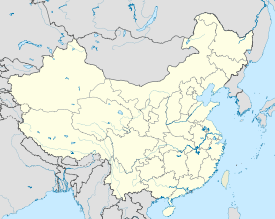 Wuxi
|
|
| Coordinates: | |
| Country | China |
| Province | Jiangsu |
| County-level divisions | 8 |
| Township-level divisions | 73 |
| Government | |
| - CPC Secretary | Yang Weize (杨卫泽) |
| - Mayor | Mao Xiaoping (毛小平) |
| Area | |
| - Prefecture-level city | 4,787.61 km2 (1,848.5 sq mi) |
| - Urban | 1,659 km2 (640.5 sq mi) |
| Population | |
| - Prefecture-level city | 4,471,900 |
| - Density | 934.1/km2 (2,419.2/sq mi) |
| - Urban | 2,235,700 |
| Time zone | China Standard Time (UTC+8) |
| Postal code | Urban center: 214000 Other Area: 214200, 214400 |
| Area code(s) | 510 |
| License plate prefixes | 苏B |
| GDP (2009) | CNY 499.2 billion |
| - per capita | CNY 81,151 |
| Local Dialect | Wu: Wuxi dialect |
| Website | http://www.wuxi.gov.cn/ |
Wuxi (simplified Chinese: 无锡; traditional Chinese: 無錫; pinyin: Wúxī; former spellings: Wu-shi, Wushi, or Wu-hsi; lit. "Without Tin"; Shanghai dialect: [ɦu.ɕiɪʔ]) is an old city in Jiangsu province, People's Republic of China. Split into halves by Lake Taihu, Wuxi borders Changzhou to the west and Suzhou to the east. The northern half looks across to Taizhou to the north over the Yangtze River, while the southern half also borders the province of Zhejiang to the south. Wuxi earned its nickname "Pearl of Lake Tai" because it's built on the shore of Lake Tai with beautiful sceneries. Wuxi was also dubbed "little Shanghai" because of its close proximity to the city and its fast urbanization and booming economy.
Contents |
Name
Wuxi means "No tin", though scholars suggest the city name may come from "Wuxu" (吳墟), meaning ruins of Wu (state), or a Baiyue word which may mean "god bird".[1][2][3][4][5][6]
History
Zhou Dynasty
Wuxi was founded 3,000 years ago by two fugitive princes, Taibo and Zhongyong, of Zhou from northern China, who intended to give their brother "Jili" (季歷) the throne. The two princes settled down in "meili" (梅里), which is believed to be today's Meicun of Wuxi (albeit some historic records lead to somewhere in today's Suzhou). They helped developing local agriculture and waterways and soon this area flourished. After the death of Taibo, because Taibo has no son, the emperor of Zhou named a descendant of his family king of kingdom "Wu". The king called his kingdom itself "Gowu". Taibo's shrine was set up in today's Meicun and the original wood structure was destroyed during the wars over the course of history. It has been renovated several times and today's architecture is mostly from Qing dynasty. A stone carved with Confucius' comment can still be seen in today's Taibo Shrine.
Spring and Autumn Period and Warring States Period
Wu became one of the strongest kingdoms during the spring and autumn period. Sunzi (Suntzu), who wrote the famous "the Art of War" came to Wu and helped the king in military affairs. Wu was considered one of the seven strongest kingdoms during Spring and Autumn Period . Some of Sunzi's descendants are still living in Sunxiang in Wuxi near the Plum Garden. However, Wu was defeated by Yue (today's Zhejiang and Fujian) later on, which was also defeated by Chu later and Wu became part of Chu during the Warring States Period.
Qin and Han Dynasty
The culture and economy center of the "Wu" area shifted to Suzhou after Qin Shi Huang, the first emperor of Qin Dynasty united China and Wuxi belonged to Suzhou back then. During the Han dynasty, Wuxi was set up as a county by the emperor Han Wudi. Historic records showed that tin was discovered during the early Han era, leading to conflicts in the area. Soon, however, the tin was depleted. This is generally believed to be the origin of the name Wuxi, meaning "no tin." Recent scholarship has brought this explanation into doubt, however. It is claimed that "Wu" is one of the auxiliary suffixes common in the local dialect. This is similar to referring to Suzhou as "Gusu" and Wu as "Gowu". The name was changed to Youxi (有錫), meaning "having tin", during the Wang Mang conflicts period because Wang wanted to change the name.
Six dynasties, Tang and Song Dynasties
Agriculture and silk industry flourished in Wuxi especially after the construction of the Grand Canal. Although Suzhou became a bigger center of the Wu area, Wuxi is still important in the county of Wu.
Yuan, Ming and Qing Dynasties and on
The agriculture (rice and fish as major products) and industry continued to develop and until the early 20th century, Wuxi became a center of the textile industry in China and one of the four most important rice markets nationwide. During the period between 1900 and 1940, Wuxi was considered a most important county in China. That is why in dramatist Cao Yu's famous drama "Thunderstorm" Wuxi was mentioned several times with a comment "Wuxi is a good place". After the PRC was set up by communists in 1949, Wuxi continued to grow in importance, with the establishment of more textile production and both light and heavy industry. This city was considered a second important city in the Jiangsu province just after the capital city Nanjing. However, its developmental model has been criticized for the environmental deterioration it caused. New strategies are demanded by the people to ensure its development is sustainable.
Geography
The city plan, as is typical of many older Chinese cities, is of a central city with a roughly circular plan, crisscrossed with older canals, the main canal still seeing heavy barge traffic.
Wuxi itself is on an alluvial plain of deep sedimentary deposits cut between limestone foothills, making it one of the sources for "scholar's rocks", the intricately weathered stones which were used as devices for contemplation.
Wuxi ranges from a very hot summer to a chilly winter, having an average annual temperature of 18 °C, though it seldom sees snow. Because of its proximity to the East China Sea, it has a monsoon season and receives 100 cm of rain annually.
Climate
| Climate data for Wuxi | |||||||||||||
|---|---|---|---|---|---|---|---|---|---|---|---|---|---|
| Month | Jan | Feb | Mar | Apr | May | Jun | Jul | Aug | Sep | Oct | Nov | Dec | Year |
| Source: MSN Weather[7] | |||||||||||||
Administration
The prefecture-level city of Wuxi administers 9 county-level divisions, including 7 districts and 2 county-level cities.
- Chong'an District (崇安区)
- Nanchang District (南长区)
- Beitang District (北塘区)
- Binhu District (滨湖区)
- Huishan District (惠山区)
- Xishan District (锡山区)
- Wuxi New District (无锡新区)
- Jiangyin City (江阴市)
- Yixing City (宜兴市)
The Wuxi New District belongs to Binhu District, but it has its own administrative committee, dealing with its affairs. These are further divided into 73 township-level divisions, including 59 towns and 24 subdistricts.
Economy
Currently Wuxi is designated an investment grade city, and has two large industrial parks devoted to new industry. While current manufacturing centers on textiles, there are projects to move to electric motor manufacturing and MRP software development, and most recently there is a movement toward the solar city of China with two big solar companies (STP and JHL) listed on overseas board.
A major push has been made by the Wuxi government to become a leader in new energy industries. According to most recent figures (2002) from the local government, 24% of economic activity is textile trade, and another 25% is industrial based manufacturing, including motors, molds and casting, with another 8% being light industry.
In 2008 new energy industries were worth 37.8 Billion RMB, with the solar photovoltaic industry accounting for 30.2 Billion RMB of the total.[8] The GDP per capita was ¥81,151 (US$11,885) in 2009, ranked second in Jiangsu Province, less than Suzhou but more than the capital city Nanjing.
Wuxi is one of the top business cities in China. According to Forbes ranking, Wuxi is in the third position for best business cities in Mainland China in 2008.
The center of the city is filled with modern high rise buildings and the market is being redeveloped in a postmodern style. Hynix completed a new chip plant in Wuxi. [9]
Industry
- Wuxi New District
Since it was established in 1992, Wuxi New District (WND) has evolved to be one of the major industrial parks in China. A wide variety of components, sub-systems and original equipments are made in WND. Approximately 1200 enterprises have been registered in WND by the end of 2008. Wuxi New District provides strong support for international manufacturing operations. The Zone focuses on formation of the five pillar industries of electronic information, precision machinery and mechanical and electrical integration, bio-pharmaceuticals, fine chemicals and new materials.[10]
- Wuxi Export Processing Zone
Established in 1992, Wuxi Export Processing Zone is located in Wuxi New District with a planned area of 2.98 sqkm. The encouraged industries include electronic information, optical-mechanical-electronic-integration, precision machinery, and new materials. It is situated near to Wuxi Airport and Changzhou Port.[11]
Culture
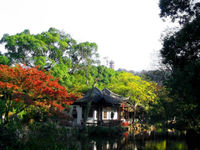
As an important city for "Wu" area, its culture bears distinctive "wu" characteristics, which can be identified in its dialect, architecture, waterway transportation and various art types.
It was one of the arts and cultural center in "Jiangnan", with several famous Chinese authors claiming Wuxi as their home town. Among them, most recently, Qian Zhongshu, author of Fortress Besieged, a comedy of manners set in China in the 1930s.
One of the handicraft specialties of Wuxi is the production of Huishan clay figurines.
In modern times Wuxi has produced a number of cultural figures such as Hua Yanjun (1893–1950) also known as "Blind Abing" (瞎子阿炳), famous for his erhu and pipa music. Another famous musician is Liu Tianhua, who was the first to compile folk music using staff.
As for cuisine, Wuxi is famous for its Wuxi-style spareribs, sweetened pork dumplings and fried gluten.
Transportation
Train
By rail, Wuxi is conveniently situated on the Nanjing-Shanghai Railway, linking it directly with the provincial capital of Nanjing (1.5 hours train-ride) and China's economic hub, Shanghai (45 minutes train-ride) and the fifth biggest economic hub, top tourist destination Suzhou (24 minutes train-ride). K-series trains all stop at Wuxi.
Air Transport
Wuxi Airport, which opened in 2004, is situated 14 km from city centre, and has direct flights to Beijing, Guangzhou, Shenzhen, Hong kong, Osaka.
Expressway and Highway
Expressways:
- Shanghai-Nanjing Expressway (Hu Ning Gao Su 沪宁高速)
- Wuxi-Yixing Expressway (Xi Yi Gao Su 锡宜高速)
National Highways:
- China National Highway 312
Provincial Roads:
- S342
Folklore
The nine peaks of Huishan, in Xihui Park on the western outskirts of Wuxi, are said to be the sleeping sons of the legendary Dragon King.
The wittiness of Wuxi natives is legendary. A popular joke is that "they can sell you meat that is really bones and they sell you dumplings that are just air inside", i.e. Wuxi pork ribs and Wuxi fried tofu dumplings, which are hollow. Some consider this trait untrustworthy.
One of the most famous folklores is about the Wuxi traditional pork ribs. It was said that the ribs were created by a peasant Lu Xiaosheng. His wife was ill but he was poor. One day she wanted to eat pork. Lu went to buy some ribs and cooked with wrapping in a "Po Gao Jian" (lit. damaged haulm cushion). Amazingly, the taste of the ribs was so good that his wife immediately recovered from her illness. Folks say that the cushion was used by a beggar who happened to be a god. Lu then began to sell the pork ribs, and became rich and famous for the brand "Old Lu's Gao Jian".
Tourism

Wuxi is a major tourist spot in the Lower Yangtze Delta. It has both natural and man-made places of interest.
Taihu Lake: The city was built on its shore. Naturally the lake is a rich tourism resource. Famous spots include Yuantou Zhu (the Islet of Turtlehead), Taihu Xiandao (Islands of the Deities).
Star of Taihu Lake: Completed in 2008, this Ferris wheel is 115-meter high. It takes 18 minutes to complete a circle. There are some other recreation facilities. Sitting in the Ferris wheel, tourists can enjoy beautiful scenery of Lake Tai and the city center. At night, lighting effects make the wheel more attractive.
Xi Shan, Huishan: Literally means "Mountain of Tin" and "Mountain of Kindheartedness". They are two small hills located at the western part of the city. The classic royal Ji-chang-yuan Gardens are located at the hill foot area as well as the very famous Tian-xia-di-er-quan Spring (lit. second best spring).NOTE: Please distinguish that Xi Shan is also a name for a more attractive tourist spot located in Suzhou. Because two independent Chinese characters are both pronounced "Xi": one stands for "West", the other (in this case) is for the metal material tin.
The Grand Canal: It passes the city. There are two canals: one is the old canal that has been there ever since it was excavated, the other is the new canal created after 1949.
Wuxi is famous for the many private gardens or parks built by learned scholars and rich people in the past. Among them, Li Yuan, Mei Yuan are good examples that have been well preserved. Xihui Gongyuan (Xihui Park), located at the foot of Xi Shan also houses historical relics, notably Jichang Garden. It is about 1770 km long.
Grand Buddha at Ling Shan: Located at the south of the Longshan Mountain, near Mashan town of Wuxi, the 88 metres Grand Buddha is one of the largest Buddha statues in China, and it is the ninth tallest statue worldwide.
Huishan ancient town: Built during 16th - 19th A.D., the town is located at the north-west part of Wuxi, west bank of Grand Canal, at the foot of Huishan. The town's buildings are mainly families ancestral halls.
Movie&TV Base: Located in the west of Wuxi, it consists of Wuxi Three State City Park, Tang City, and Shuihu City. Established in 1987,and it is the first Movie and TV base for shooting.
Shan Juan Cave: Located in Yixing (a region belongs to Wuxi), it is one of the 4-starts scenic zones. Chinese Romeo and Juliet, Liang Shanbo and Zhu Yingtai were said to study behind the cave.
Other Historical Places: Former Residence of Xue Fucheng, Former Residence of A Bin, Former Residence of Xu Xiake, Site of Luotuo Dun, Taibo Temple and Taibo Tomb, and Donglin Shuyuan, etc. These historical places are well protected by the city government.
Wuxi Museum
Sports and stadiums
Wuxi have two stadiums, one is the old stadium located in the south part of the city and is waiting to be released. Another one is the new one named Wuxi New Stadium. The new stadium that consists of swimming stadium, soccer stadium and other functionalities is located at south-west part of the city, near Lake Tai.
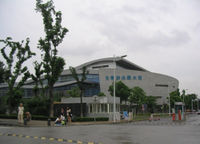
Education
Universities and Colleges
- [1] Jiangnan University (江南大学)
- [2] Wuxi Fisheries College,NAU (南京农业大学无锡渔业学院)
- [3] Wuxi Professional College of Science and Technology(无锡科技职业技术学院)
- [4] Wuxi Institute of Technology(无锡职业技术学院)
- [5] Wuxi City College of Vocational Technology(无锡城市职业技术学院)
- [6] Wuxi South Ocean College(无锡南洋职业技术学院)
- [7] Jiangsu College of Information Technology(江苏信息职业技术学院)
- [8] Wuxi Teachers' College(无锡高等师范学校)
- [9] Jiangyin Polytechnic College(江阴职业技术学院)
- [10] Wuxi Higher Health Vocational Technology School(无锡卫生高等职业技术学校,原无锡卫生学校)
High Schools
- [11] Wuxi No.1 High School (无锡市第一中学)
- [12] Wuxi Furen High School (No.2 Senior High School)] (无锡市辅仁中学/无锡市第二中学)
- [13] Wuxi No.3 Senior High School (无锡市第三高级中学)
- [14] Wuxi Qingshan High School (无锡市青山高级中学)
- [15] Jiangsu Tianyi High School (江苏省天一中学)
- [16] Jiangsu Xishan Senior High School (江苏省锡山高级中学)
- [17] Wuxi Big Bridge Experimental School (无锡市大桥实验中学)
- [18] Wuxi NO.1 Girls High School (无锡市第一女子中学,原东林中学)
Notable people
- Gu Kaizhi (later half of the 4th century), a painter.
- Li Sheng (772-846), poet, who lived and was buried in Wuxi.
- Gu Xiancheng (1550–1612), scholar and politician, especially famous of "Dong Lin Movement".
- Xu Xiake (1587–1641), Ming Dynasty traveller and writer.
- Hua Hengfang (1833–1902), mathematics in late Qing Dynasty who did studies in various area of science and technology. He participated in designing the first streamer and the first steamboat in China.
- Xue Fucheng (1838-1894), well-known ideologists, diplomatists and one of leading exponents to make national bourgeoisie reform in late Qing Dynasty.
- Rong Desheng (1875–1952), the largest national capitalist in the Min Guo era, most famed for his contribution to the Chinese texitle industry.
- Rong Yiren (1916–2005), Rong Desheng's son, the powerful "Red Capitalist", the capitalism-communist, Vice-President of the People's Republic of China from 1993 to 1998.
- Abing (1893–1950) folk musician, best known for his work "Er Quan Ying Yue" (moon reflected on Er stream) for the erhu.
- Xu Beihong (1895–1953), painter, most famed for his paintings of horses.
- Qian Zhongshu (1910–1998), writer, best known for his comedy of manners Fortress Besieged.
- Ding Junhui (1987-), teenage Snooker sensation.
- Zhou Yongkang (1942-), senior Communist Party of China leader
- Jimmy Wang Yu (1943-), famous Chinese actor who shot to fame in Shaw Brother's One Armed Swordsman. His movie, the Chinese Boxer (1969) is credited with being the first Hong Kong martial arts film that kick started the unarmed combat genre that took Asia by storm in the 1970s.
- Yang Kai (1982-), mathematics teacher who graduated from the National University of Singapore: Electrical Engineering course. He was the first of his kind (Wuxinese) to attain a Hwachong scholarship in Singapore. He loves Tan Kah Kee, the Good News Cafe in Hwa Chong Institution, and most importantly, himself. He pledged allegiance to Lee Kuan Yew on his birthday last year.
Gallery
 Downtown Wuxi |
 Liyuan Gardens |
 Yuantouzhu peninsula, Sanshan Islands and Lake Tai, Wuxi |
 West part of Wuxi from temple of Mt. Qingshan |
|
Morning market in old town |
 Ling Shan giant buddha, Wuxi |
 "The Light of Lihu lake", Wuxi |
 Wuxi night skyline |
International relations
Twin towns — Sister cities
Wuxi is twinned with:
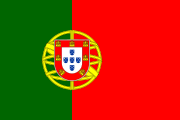 Cascais, Portugal (September 14, 1993)
Cascais, Portugal (September 14, 1993) Akashi, Japan (since August 29, 1981)
Akashi, Japan (since August 29, 1981) Chattanooga, Tennessee United States (October 12, 1982)
Chattanooga, Tennessee United States (October 12, 1982) Sagamihara, Japan (August 6, 1985)
Sagamihara, Japan (August 6, 1985)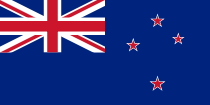 Hamilton, New Zealand (July 5, 1986)
Hamilton, New Zealand (July 5, 1986) Scarborough, Ontario Canada (April 10, 1996)
Scarborough, Ontario Canada (April 10, 1996) Davis, California (October, 2003)
Davis, California (October, 2003) Alameda, California USA (2004)
Alameda, California USA (2004) Bocholt, Germany
Bocholt, Germany Gimhae, South Korea (December 14, 2005)
Gimhae, South Korea (December 14, 2005) Daejeon, South Korea (August 27, 2006)
Daejeon, South Korea (August 27, 2006)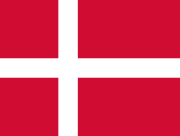 Ballerup, Egedal and Frederikssund municipalities, Denmark (2007)
Ballerup, Egedal and Frederikssund municipalities, Denmark (2007) Zielona Góra, Poland (2008)
Zielona Góra, Poland (2008)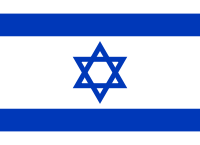 Tiberias, Israel (2008)
Tiberias, Israel (2008) Norwich, Connecticut USA (August 17, 2010)
Norwich, Connecticut USA (August 17, 2010)
The two county-level cities administered by Wuxi, Jiangyin and Yixing, are also twinned with:
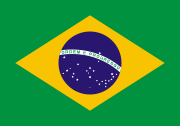 Belo Horizonte, Brazil (November 18, 1996)
Belo Horizonte, Brazil (November 18, 1996) Novo Mesto, Slovenia (May 6, 1994)
Novo Mesto, Slovenia (May 6, 1994)
See also
- Jiangnan
- List of cities in the People's Republic of China by population
References
- ↑ “无锡”地名的由来
- ↑ 而今现在(2006-05-01 00:00:00 ~ 2006-06-01 00:00:00档案)
- ↑ 无锡市
- ↑ 无锡
- ↑ 考“无锡”地名的由来
- ↑ 无锡地名典故
- ↑ "MSN Weather". http://weather.msn.com/monthly_averages.aspx?wealocations=wc:36903&q=Wuxi%2c+CHN+forecast:averagesm. Retrieved April 2, 2009.
- ↑ China Business News http://thechinaperspective.com/articles/wuxicitywantsroleingreenenergy6391/index.html
- ↑ Hynix completes new chip plant in China
- ↑ RightSite.asia | Wuxi New District
- ↑ RightSite.asia | Wuxi Export Processing Zone
External links
- Government website of Wuxi (available in Chinese, Japanese and English)
- Wuxi city guide with open directory (Jiangsu Network)
- Wuxi Expat community (Wuxi Network) Chinese: {{{1}}}
- Yun Ya Law Firm
|
|||||||||||||||
|
||||||||||||||||||||
|
|||||||||||||||||||||||||||||||||||||||||||||||||||||||
